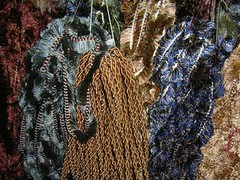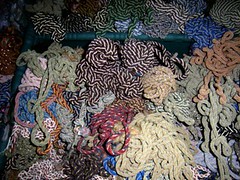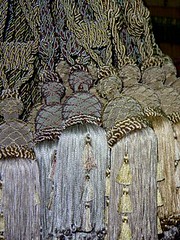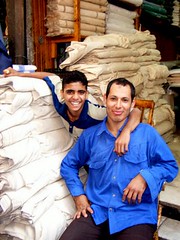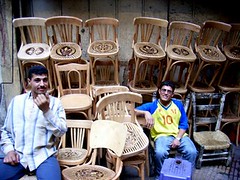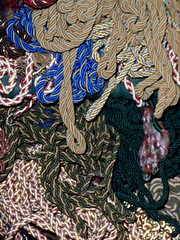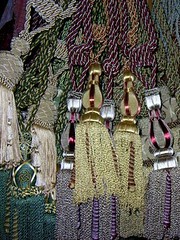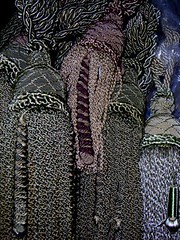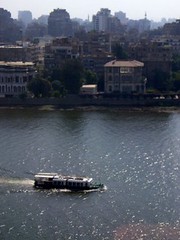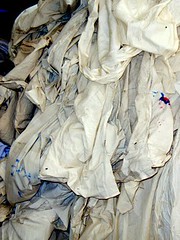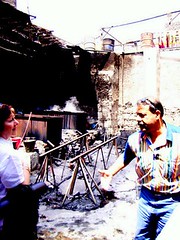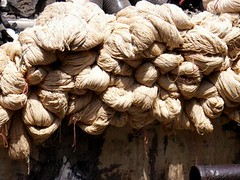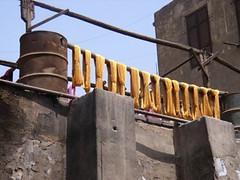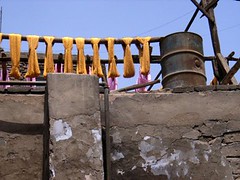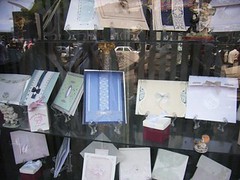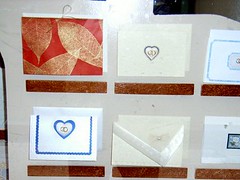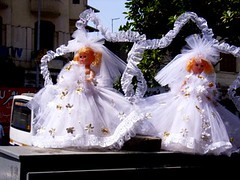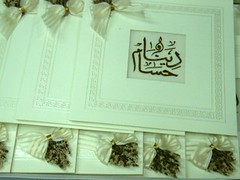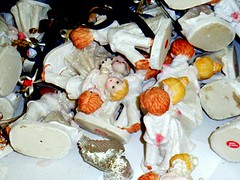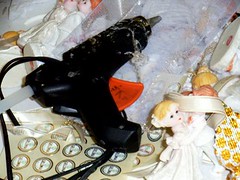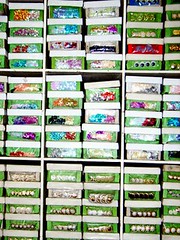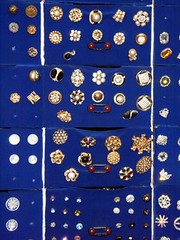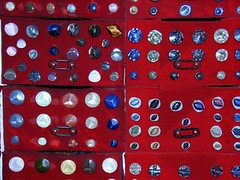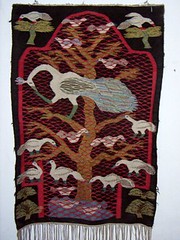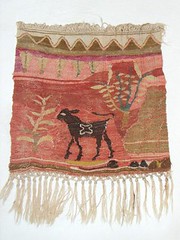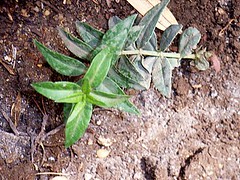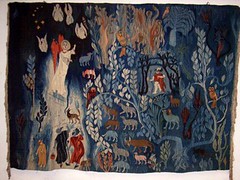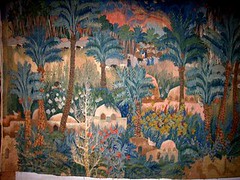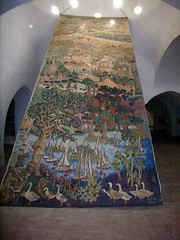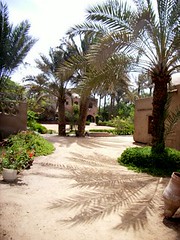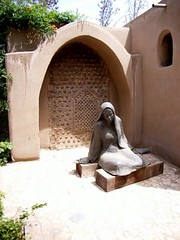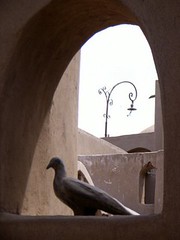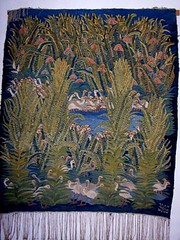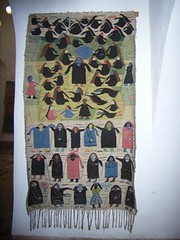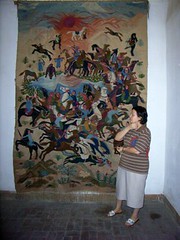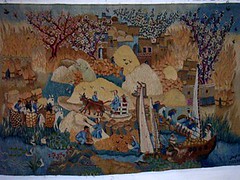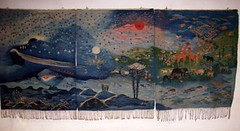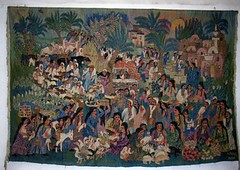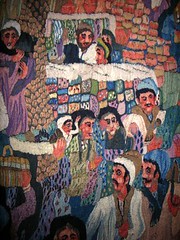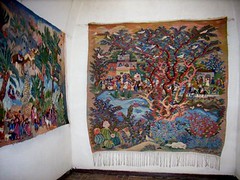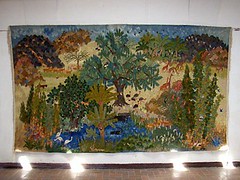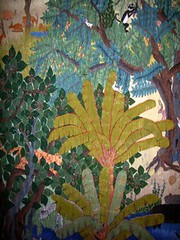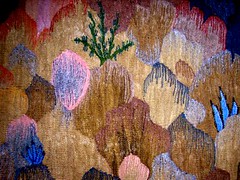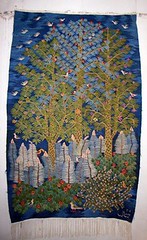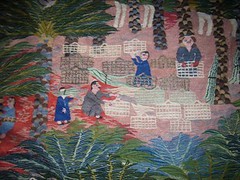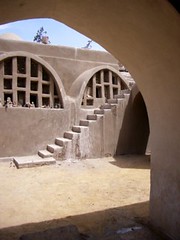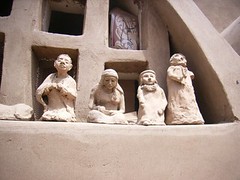Flying to Kuwait
 Tuesday, May 31, 2005 at 10:25AM
Tuesday, May 31, 2005 at 10:25AM I have spent the last five days in Kuwait, or coming and going from Kuwait.
I had the honour of being one of three judges to judge a very stunning section of the quilt show, and then spoke at the opening.
I flew over on Thursday. It was intended to be Friday with a planned arrival at three and judging at five. Then the airline notified us of a change to the flight – so the midday flight now took off at six thirty. Since I was obviously not going to be able to do the judging we decided to change the flight to a day earlier.
There was a bride checking in in full formal bridal gear. Lace top to the dress, full pure white satin skirt, looking a bit sad around the hem after walking around the airport, and even a waist length veil. She had professional bridal makeup. Since this was heavy on the bright blue eyeshadow, black eyeliner, and hot scarlet lips, and with dutch doll rosy cheeks, it was a bit like having someone in pantomime costume in the check-in queue. She had two women with her, possibly a mother and sister, but no sign of a groom, so perhaps she was traveling to meet him. Maybe even for the first time.
As the flight was called and people stood up and headed for the tube to the plane I was about forty back from the front. Egyptians and other Arabs do not really queue, but it was an orderly four-wide group with some moving up to make the front section wider. Then I was thrust hard to one side, and really pushed out of the way of a tall man with white dishdash (long ‘dress’) and kafieh (headdress) who proceeded to elbow his way to the front. Some people objected and were ignored. He was obviously important, or thought he was.
As I filed down the tube towards the people massed in the area near the door to the plane I saw a boarding pass on the ground. I actually didn’t take much notice, as you often see them here, as people drop them anywhere s they get off a plane and no longer need them. When I got down to the plane I could se what the holdup was. The tall gentleman in white had obviously lost his boarding pass as he had been asked to stand aside while others boarded, and was at the stage of tipping out the contents of his briefcase.
I was actually quietly gleeful.
I was seated on the plane next to a Kuwaiti couple returning from Cairo. She was in full nekeb cover – even her eyes were behind a fine black film of fabric. The part over her lower face was just a flap so she could lift it to insert food or drinks under it.
Talking to someone in this sort of veiling is really complicated as you don’t get the usual signals that we are used to in our society which tell you how the woman you are talking to is reacting to your conversation.
I taught a few people in classes who wore it, and found that it was like talking to a mask, and very hard to tell if they were understanding what you were saying or not, and happy with what they were doing, or miserable. It was a bit like the difference between talking to someone on a phone, and talking to an answering machine – but not as bad of course! They were nice girls, and answered – and answering machines, despite their name, do not.
This girl was obviously a white-knuckle flyer – or would have been except that her knuckles were covered with fluffy black gloves. As the plane started to move away from the docking she put her hand and my thigh and started clutching it rhythmically – and it reminded me of a recent encounter with a taxi driver. Perhaps he was just nervous? It was odd, especially since her husband was on the other side of her. As we started taxiing towards the runway she had both hands on my upper arm and her head on my shoulder, and she was making rather puppyish whimpering. I was still a bit nonplussed, but sorry for her obvious fear. I don’t like flying much either and so I was sympathetic, but still a bit uncomfortable and not sure what to do.
When we got out towards the main runaway she just came apart. She hurled herself across my lap, whimpering and burrowing into me – snuffling and crying and flaying her arms around a bit. I took my glasses off. I was patting her back awkwardly and trying to hug the bits I could reach – it is surprisingly hard when tightly seat belted with a wriggling person on your lap. I looked at her husband for help and guidance, but he was laughing uproariously I suspect it was not humour, but real embarrassment, and he did not know what to do either. He told me, by allowing his hands to shake in mid air, that she was nervous. I didn’t need to be told – I had already worked that one out.
I know exactly what I looked like. Have you ever seen someone who really does not like dogs, but has a large one walk up and lean on them when they are in company? They tend to do a nervous sort of pat – straight up and down, and say things like “Nice doggie”. People who really like dogs give them a firm rubbing around the head, often with both hands, and ruffle their fur and ears – it is quite a different response.
As we took off and were actually up she calmed down a lot. She sat up, rearranged herself and was a bit apologetic, though she was still keeping a firm grip on my arm.
The seat belt light went off and the man in front put his seat back. Usually this is fine, you suddenly have less space, but it is not bad, and you can compensate by putting your own seat back too. However, this wasn’t fine – his seat was actually almost touching my face. A steward came past, recognized the problem immediately, and asked him to put his seat forward a bit, as they would be serving lunch. The gentleman pointed out that he did not want launch, and was tired. The steward pointed out that the seat was a bit broken and leant back too far so the lady behind had no room. The gentleman (wrong term here, but I am not sure what to call him) suggested that they move me and pointed to an empty seat.
I moved to the empty seat. Then the lady beside me started talking to me, fast and in a very heavy accent. She had the heavily hennaed hair of an older woman, with white roots, and had henna patterns on her hands. I couldn’t understand a word and asked a friendly steward if he could tell me what she was saying. He said she had never flown before but that he couldn’t understand her either.
The steward pulled her table out of the arm of the seat and she was absolutely amazed and trying to work out where it had come from. We were given food and she ate the salad voraciously. Then she jammed her tissue against her mouth and started giving little hiccups and burps. This, I can assure you, is not conducive to enjoyment of the meal I was halfway through as I was petrified that she would be sick. She ate her meal but had to go to the toilet before the trays were taken away – and that meant both her tray and mine went onto the floor in the aisle so I could get out of my seat, and then she could get out too. She talked to me then for every bit of the rest of the next two hours. It was a very interesting flight.
